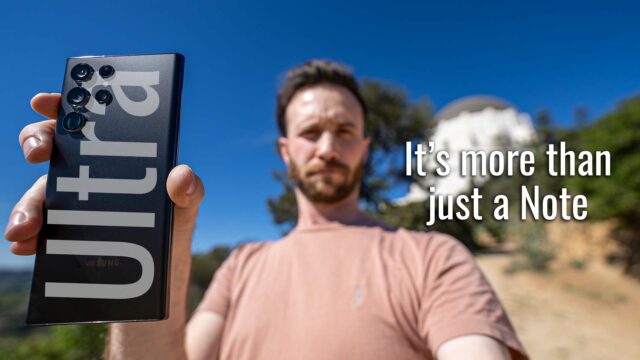Samsung Flash Complete Walkthrough: Affordable, Portable Windows
Samsung has had plenty of success with their line up of Chromebooks–the cheap and cheerful laptops running Chrome OS that can use a full Chrome browser and Android apps but I wouldn’t quite consider a full-blown desktop OS.
While these are great for anyone who just needs to do simple computer tasks, there is definitely a sizeable market for people who would love something in the same price range but that runs proper Windows on it so they can use all the obscure printer apps their job requires, or real office suite and Adobe apps, etc. Well, this is the new Samsung Flash and it starts at $349 and runs Windows 10.
Now, since I was given a little time with the Samsung Flash here at CES I figured I’d try and do a complete walkthrough on it for you guys. If you aren’t familiar, a complete walkthrough here is where I try and go through as many features on the device as possible so you guys are better prepared should you be in the market to buy one.
Hardware
With that said, let’s get started with the styling.
Now at that $350 price range, you can’t quite expect it covered in metal diamond cut edges, etc. but it seems Samsung at least tried to go more into the playful aspect to try and alleviate the fact that its a pretty plastic covered laptop.
The top of the laptop is covered in this dotted texture while the inside is covered in what looks like maybe it would be a fabric when you first glance at it, but instead it’s a dotted hard plastic.
The keyboard is meant to mimic a typewriter keyboard with large very clickable buttons and I have to admit, it was fun to type on and I got pretty fast at it pretty quickly.
Set in that keyboard on the right is a fingerprint sensor for Windows Hello to allow you to sign in with your finger–a nice addition on a laptop in this price range actually.
Above that we have our 13.3″ FHD LED anti-glare screen and above that a webcam.
We also have dual 1.5W speakers.
For ports, we have two USB-C ports, one USB 3.0 port, a USB 2.0 port, HMDI port, 3.5mm audio jack and a UFS (which is a type of flash memory) MicroSD card slot to expand the storage which is kinda cool, I think.
Internally, you have a choice of an Intel Celeron N4000 processor (for $349.99) or an Intel Pentium Silver N5000 (for $399.99). Either is paired with 4GBs of RAM and a 64GB eMMC storage.
The battery is a 39wH battery but considering the other laptop that this one reminds me of considering the price range, etc., the Surface Go, has a 26.12Wh battery and lasted a long time, I’m sure this will do just fine.
We have support for 802.11ac Wifi with 2×2 MIMO as well and the device weighs in at 3.02 lbs.
Software
For software, it’s running Windows 10 Home and has the normal bloatware from Windows like Minecraft etc but also has a few apps that Samsung has added including:
- Samsung Messages – This allows you to use a compatible Samsung device to text from the computer.
- Samsung Gallery – Allows you to sync photos and media with the Samsung cloud (and again, their other devices).
- Samsung Recovery – A backup, recovery, disk tool made by Samsung.
- Samsung Settings – Extra settings Samsung added like the system starting when the lid is opened, extra battery/performance settings, a setting to choose the three best wifi networks etc, some display presets for gaming, movie, etc., similar audio effect profiles, a way to customize the quick settings menu, and some regulatory/about info.
- Studio Plus – An app for creating custom movies.
- Little Artist – A kids entertainment game.
But regardless of the Microsoft or Samsung origins, you can right-click and uninstall any of them if you want.
Now, since this was at a press event and the software wasn’t final, I couldn’t do any benchmarks sadly, but considering that processor, RAM and price, this isn’t going to handle a lot other than some maybe light photo editing, word processing, web-browsing, etc. Again, it’s aimed to be the Windows equivalent of a Chromebook.
And that’s it, I love that there are more of these low-end Windows Chromebook competitors. I already love the Surface Go and am interested in testing this one out against it since it has a similar appeal. I used that Surface Go to write from cafes all day with battery to spare, you don’t notice it in your backpack at all, etc. and can only imagine this will be similar. My concern is that the Surface Go is similarly priced but a little better looking, has a touchscreen and can be used as just a tablet if you want, etc. but we’ll see when I can test them side by side one day.
Let me know what you guys think!















